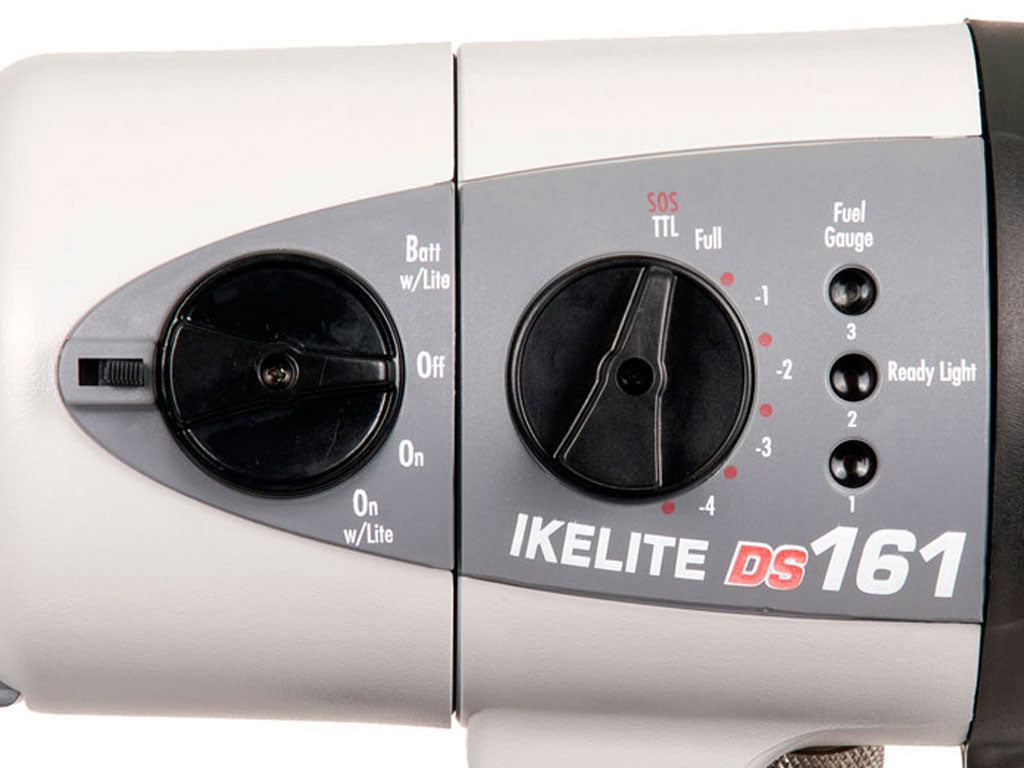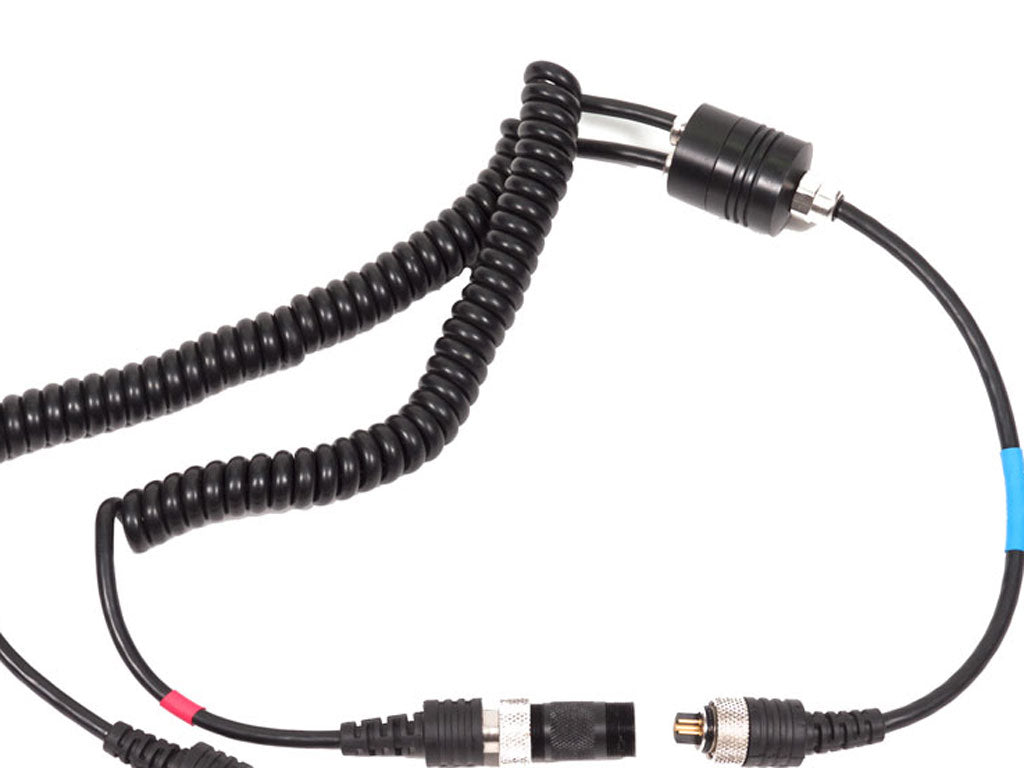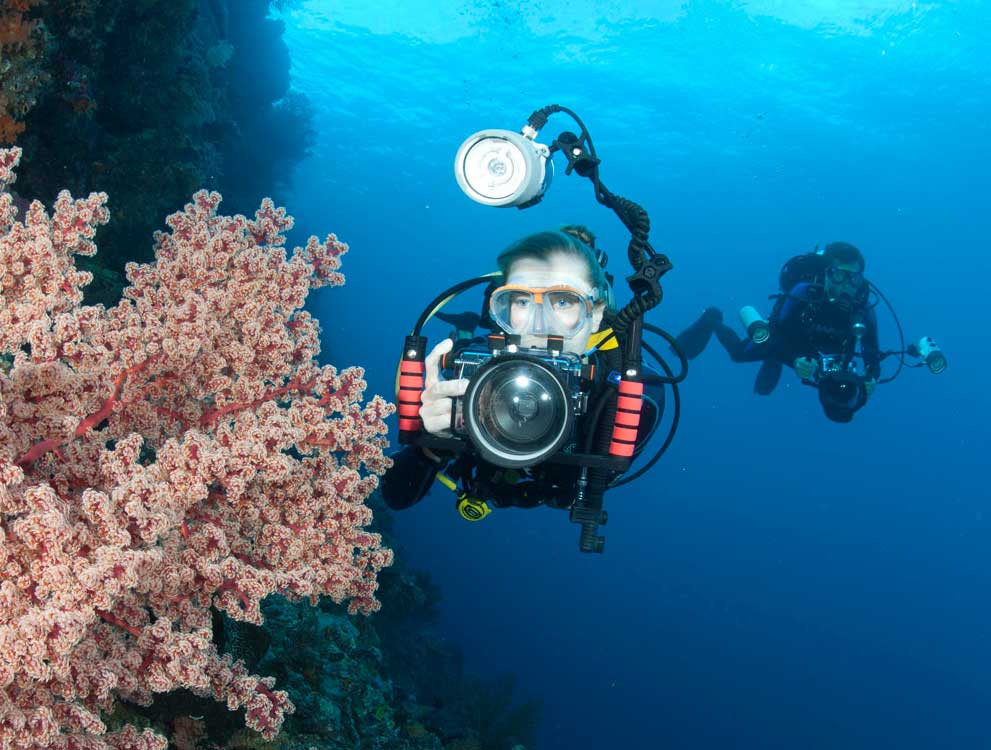Maintaining the O-Ring
The battery pack for DS125, DS160 and DS161 strobes is designed with the most reliable, user friendly sealing method possible. If maintained, it is virtually impossible to flood a battery pack.
The o-ring is a compression seal. It does not need to be lubricated and requires virtually no maintenance. In fact, we recommend that you do not remove the o-ring from the battery pack unless you are replacing it.
If sand, dirt, or debris is on the o-ring, wipe it off without removing the o-ring from the battery pack. Unless the o-ring has fallen off, it is not likely that any debris got underneath it. Use your finger or a clean, lint-free cloth. Use the tiniest amount of Ikelite silicone lubricant only if there is stubborn lint or dust that won't come off of the o-ring.
Intermittent Operation
We call the gold contacts on the battery pack "receptacles." These can loosen over time as the battery pack is removed and replaced over and and over. If you're experiencing intermittent loss of power at depth (evidenced by the ready light going out when the pack is good and fully charged), then loose receptacles may be to blame.
To tighten, use a very thin flat screwdriver to gently bend the 4 four prongs of the receptacle very slightly towards the center. Repeat on all 5 receptacles.
Flooded Battery Packs
If you have flooded the battery pack, discontinue its use immediately. Using a water damaged battery pack can be hazardous and may short circuit your strobe front. DO NOT ship a flooded battery pack. Please dispose of the battery pack at a local facility capable of properly recycling batteries. Purchase a new NiMH battery pack from your local Authorized Ikelite Dealer.
Why doesn't my charger work?
The center contact of the receptacle into which you plug the charger has a split pin that can get squeezed together preventing good electrical continuity. Take something like a small screwdriver and spread the center pin slightly so it provides a snug fit with the plug. The socket is diode protected to only allow electricity "in" so you do not need to worry about a short circuit if you touch the side of the socket.
If the charger still doesn't work, there is likely a fatal problem in either the charger or the battery pack.
Why won't my charger terminate charge?
First, check that you're using the correct charger for your battery pack. Chargers for lithium ion batteries are not interchangeable with chargers for NiMH and NiCd batteries.
Second, make sure you're interpreting the LED correctly. Smart Chargers for Lithium Ion (Product numbers 4067.1 and 4067.3) blink while charging and switch to solid when terminated. The Smart Charger for NiMH and NiCd (Product number 4066.1) runs precisely the opposite: it is solid while charging and blinks when terminated.
If the charger still won't terminate, it may have been damaged by moisture or an electrical surge. Discontinue use immediately and replace the charger. Use of a charger which will not terminate charge can cause permanent damage to the pack and may be a safety risk.
Can I charge my battery with a solar charger?
In our experience, the solar chargers on the market are extremely slow (as in days), do not charge all types of rechargeable cells, and often do not charge compatible cells fully. Under-charged cells will dramatically affect the performance and recycle time of your strobe. We are not aware of a solar charger that can adequately re-charge the high capacity cells used in our DS-series strobes.
NiMH Battery Packs

- Product number 4066.5
- Manufactured 2005 - Present
Nickel metal hydride (NiMH) battery packs are the most prolific and most reliable battery packs for reliability of use in a variety of conditions with high or low temperature conditions. They age gracefully and hold up well to both frequent and infrequent use.
Storage Recommendations for NiMH
Always store your packs in a dry location at a temperature of less than 30°C (86°F). Approximately 20-40% of the packs capacity will drain when left idle for a month. The lost capacity will be recovered after two or three charger/discharge cycles. Cycle the pack every 6 months during long-term storage.
Compatible Chargers for NiMH
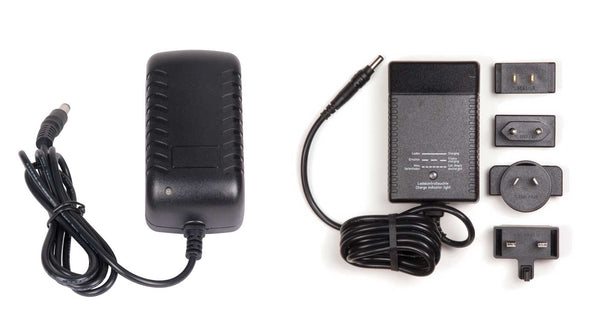
Smart Chargers with non-interchangeable plugs
- Product numbers 0083.92 - 0083.93 - 0083.94 - 0083.95
- Manufactured 2016 - present
- LED indicator is green when unplugged from pack
- Red when charging
- Green when pack is fully charged
Smart Chargers with interchangeable plugs
- Product number 4066.1
- 2005 - 2016
- LED indicator is dark when unplugged from pack
- Solid red when charging
- Slow blinking red when trickle charging
- Fast blinking red when pack is deeply discharged
In a pinch, NiMH battery packs can be charged with li-ion chargers but we do not recommend it because charge termination protocols are different between the two chemistries. NiMH battery packs should never be charged with our original NiCd charger (see below) which can overheat and permanently destroy the cells.
Li-Ion Battery Packs

- Product numbers 4067 (1st Gen) - 4067.2 (2nd Gen)
- Manufactured 2012 - 2016
- No longer available due to a long-term shortage of cells
Lithium ion (li-ion) battery packs are the highly desirable because of their high energy density. However, li-ion chemistry naturally degrades over time and is more sensitive to use in extreme temperatures—particularly heat.
There is no practical difference in capacity or use of 1st and 2nd Gen Li-Ion battery packs. 2nd Gen battery pack features updated circuitry which supports newer safety and charging protocols.
Storage Recommendations for Li-Ion
Always store your packs in a dry location at a temperature of less than 20°C (68°F). Lithium ion batteries by nature lose a small percentage of their capacity per year, whether they are used or not. This loss is non-recoverable. For best results, we recommend cycling (discharge/charge) at least once every 6-12 months and storing at around 50% charge.
End of Life for Li-Ion
Li-ion battery packs do not degrade as gracefully as NiMH batteries. Once one or more of the cells inside of the pack drop below a certain cut-off voltage, the pack will stop working completely or only provide 10-20 flashes per charge. This is a required safety feature for high powered li-ion packs.
We are no longer able to offer replacement li-ion battery packs due to a long-term shortage of available cells. For a limited time, we are running a special exchange program for li-ion battery packs that are less than 5 years old.
Within North America, the exchange can be arranged by sending the packs to us via UPS or FedEx ground service. Since transportation of dead lithium ion batteries via air service is prohibited, we ask that customers outside of North America contact their nearest Ikelite distributor to arrange for the exchange.
If your battery pack is older than 5 years, you can transition to NiMH by purchasing a new battery pack and charger.
Compatible Chargers for Li-Ion
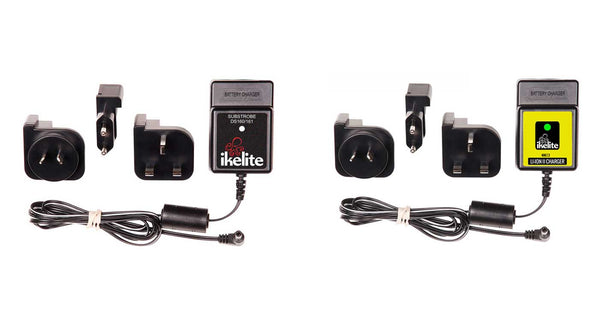
Smart Chargers Li-Ion
- Product numbers 4067.1 (1st Gen) - 4067.2 (2nd Gen)
- Manufactured 2012 - 2016
- LED indicator is dark when unplugged from pack
- Blinking red when charging
- Solid red when pack is fully charged
For safety reasons, li-ion battery packs cannot be charged by NiMH or NiCd chargers. 1st Gen and 2nd Gen chargers can be interchanged in a pinch, but this may reduce the lifespan of the battery pack.
- Product number 4066
- Manufactured 2000 - 2005
NiCd Battery Packs
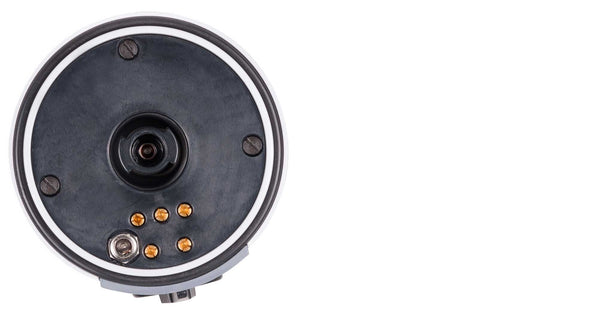
Nickel cadmium (NiCd) battery packs were beloved at the time for their durability in a wide range of temperatures, but were ultimately discontinued because of environmental regulations.
Storage Recommendations for NiCd
Ni-cad batteries will loose approximately 2% of their charge per day. Recharging after thirty days will assure a full charge before use. The pack should be charged at least every three to six months if not used. Do not leave a pack completely discharged.
End of Life for NiCd
We do not re-cell or exchange NiCd battery packs. Please dispose of your dead battery pack at a local facility which is capable of properly recycling batteries. Newer NiMH battery packs and chargers can be used with your existing DS125, DS160, or DS161 strobe front without modification.
Compatible Chargers for NiCd
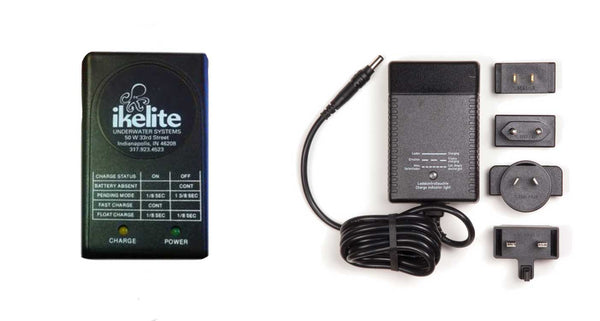
Smart Chargers with interchangeable power cords
- Product number 4063.1
- Manufactured 2000 - 2005
- Green LED lights when plugged into wall
- Yellow charge LED on when charging
- Yellow charge LED off when complete
Smart Chargers with interchangeable plugs
- Product number 4066.1
- 2005 - 2016
- LED indicator is dark when unplugged from pack
- Solid red when charging
- Slow blinking red when trickle charging
- Fast blinking red when pack is deeply discharged
NiCd packs can be charged with newer NiMH chargers, but not vice versa.











